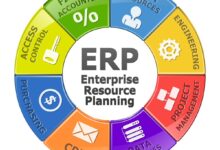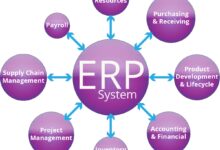SAP ERP Implementation Cost: 7 Shocking Truths You Must Know
Thinking about SAP ERP implementation cost? You’re not alone. Thousands of businesses face this complex puzzle every year—balancing powerful functionality with budget realities. Let’s break down what you’re really paying for.
SAP ERP Implementation Cost: What’s the Real Price Tag?

When companies begin their SAP ERP journey, one of the first—and most critical—questions they ask is: How much will this actually cost? The answer isn’t straightforward. SAP ERP implementation cost varies widely based on company size, industry, scope, and customization needs. However, understanding the baseline figures helps set realistic expectations.
Typical Cost Ranges by Business Size
Small to mid-sized businesses (SMBs) often expect lower price tags, but SAP implementations are rarely cheap. For small enterprises, the total SAP ERP implementation cost can range from $150,000 to $1 million. Mid-sized companies typically spend between $1 million and $5 million. Large enterprises, especially multinational corporations, can face costs exceeding $10 million—sometimes reaching $50 million or more when global rollouts, integrations, and extensive customizations are involved.
- Small businesses: $150,000 – $1 million
- Mid-sized firms: $1 million – $5 million
- Enterprises: $5 million – $50+ million
These figures include software licensing, consulting, infrastructure, training, and ongoing support. It’s crucial to note that SAP ERP implementation cost isn’t a one-time expense—it’s an investment spread over several years.
Hidden Costs That Inflate the Budget
Many organizations underestimate the hidden components that contribute to SAP ERP implementation cost. These include:
- Data migration challenges
- Custom development needs
- Extended project timelines due to scope creep
- Post-go-live support and stabilization
- Change management and user adoption programs
“Many clients think they’re signing up for a $2 million project, only to discover they’ve spent $4 million by go-live due to unanticipated integration and training demands.” — SAP Implementation Consultant, PwC
According to a Gartner report, up to 30% of ERP implementation budgets are consumed by unforeseen expenses. This makes comprehensive planning and risk assessment essential.
Key Factors Influencing SAP ERP Implementation Cost
The final SAP ERP implementation cost is shaped by a combination of internal and external variables. Understanding these factors helps organizations forecast more accurately and avoid budget overruns.
Company Size and Complexity
Larger organizations with multiple subsidiaries, geographies, and business units naturally face higher SAP ERP implementation costs. Each additional legal entity, currency, language, and regulatory requirement increases the complexity of configuration and integration. For example, a global manufacturer with operations in 15 countries will require extensive localization, tax compliance, and multi-currency support—each adding to the overall cost.
Moreover, decentralized decision-making structures can slow down the implementation process, leading to extended consulting hours and higher labor costs. The more complex the organizational structure, the greater the SAP ERP implementation cost.
Scope of Implementation
The scope defines which SAP modules are being implemented—such as Finance (FI), Controlling (CO), Sales and Distribution (SD), Materials Management (MM), Production Planning (PP), and Human Capital Management (HCM). A full-suite implementation covering all core modules will naturally cost more than a selective rollout focused only on finance and logistics.
Additionally, the depth of process integration matters. Are you implementing standard processes, or are you re-engineering workflows to align with SAP best practices? The latter often requires more configuration, testing, and change management—driving up the SAP ERP implementation cost.
Customization vs. Standardization
One of the biggest cost drivers in any SAP ERP implementation is the level of customization. While SAP offers robust standard functionality, many businesses insist on tailoring the system to match legacy processes. This may seem logical, but it often leads to:
- Higher development costs
- Longer testing cycles
- Increased risk of upgrade complications
- Greater dependency on specialized consultants
Organizations that adopt SAP’s best practices with minimal customization typically experience lower SAP ERP implementation costs and faster time-to-value. A study by Panorama Consulting found that companies with high customization levels were 40% more likely to exceed their budget.
Breakdown of SAP ERP Implementation Cost Components
To truly understand SAP ERP implementation cost, it’s essential to dissect it into its core components. Each plays a vital role in the overall investment.
Software Licensing Fees
SAP licensing is one of the largest upfront costs. SAP offers several licensing models, including:
- Per-user licensing (based on named users)
- Processor-based licensing
- Subscription-based models (especially for SAP S/4HANA Cloud)
The cost varies significantly depending on the edition (SAP S/4HANA On-Premise, Private Cloud, or Public Cloud) and the number of users. For example, SAP S/4HANA Cloud licenses can range from $100 to $250 per user per month. A company with 1,000 users could face annual licensing costs of $1.2 million to $3 million.
It’s worth noting that SAP has been shifting toward cloud-based subscription models, which convert large capital expenditures into predictable operational expenses—though the total cost over time may be higher.
Consulting and Professional Services
Most organizations lack the internal expertise to implement SAP ERP independently. As a result, they rely on SAP partners or third-party consultants. Consulting fees can account for 40% to 60% of the total SAP ERP implementation cost.
Top-tier firms like Deloitte, Accenture, and IBM charge between $150 and $400 per hour for senior consultants. A typical implementation team may include:
- Project managers
- Functional consultants (Finance, Logistics, HR, etc.)
- Technical consultants (ABAP, Fiori, Integration)
- Change management specialists
- Data migration experts
A six-month project with a team of 10 consultants averaging $200/hour can easily incur $1 million in consulting fees alone.
Infrastructure and Hosting
For on-premise deployments, infrastructure is a major cost component. This includes servers, storage, networking, database licenses (e.g., SAP HANA), and data center setup. High-availability configurations and disaster recovery setups further increase expenses.
Cloud deployments reduce upfront infrastructure costs but introduce recurring hosting fees. Providers like AWS, Azure, and Google Cloud offer SAP-certified environments, but monthly costs can range from $20,000 to $100,000 depending on system size and performance requirements.
Hybrid models are also common, where some components are hosted on-premise while others are in the cloud—adding complexity and integration costs to the SAP ERP implementation cost.
SAP S/4HANA vs. Legacy SAP ERP: Cost Comparison
With SAP pushing all customers toward S/4HANA, many organizations are evaluating whether to upgrade or start fresh. The SAP ERP implementation cost differs significantly between legacy systems (like ECC 6.0) and the modern S/4HANA platform.
Greenfield vs. Brownfield Implementation
When migrating to SAP S/4HANA, companies can choose between:
- Greenfield: A fresh implementation, starting from scratch.
- Brownfield: A system conversion, migrating existing data and configurations.
- Bluefield: A hybrid approach using selective data transition.
Greenfield implementations typically have higher initial SAP ERP implementation costs due to the need for complete process re-design and data migration. However, they offer cleaner systems, better performance, and lower long-term maintenance costs.
Brownfield conversions are faster and cheaper in the short term but often carry over legacy inefficiencies and technical debt, which can increase future upgrade and support costs.
Cloud vs. On-Premise Cost Models
SAP S/4HANA is available in three deployment options:
- S/4HANA On-Premise
- S/4HANA Private Cloud
- S/4HANA Public Cloud
The public cloud edition follows a subscription model with predictable monthly fees, making it attractive for mid-sized businesses. However, long-term costs may exceed on-premise ownership, especially for large enterprises.
On-premise deployments require significant upfront investment but offer greater control and customization. Total cost of ownership (TCO) analyses over a 5- to 10-year horizon often show on-premise as more economical for large, stable organizations.
“The cloud isn’t always cheaper. For large enterprises with complex needs, on-premise S/4HANA can save millions over a decade.” — SAP Architect, Capgemini
How to Reduce SAP ERP Implementation Cost
While SAP ERP implementation cost is substantial, there are proven strategies to control and even reduce it without sacrificing quality.
Adopt SAP Best Practices
SAP provides industry-specific best practices for over 25 sectors. These pre-configured business processes reduce the need for customization and accelerate implementation. Companies that align their operations with SAP best practices often cut implementation time by 30% and reduce consulting costs significantly.
For example, SAP Activate methodology includes over 1,000 pre-delivered scope items and guided configuration tools that streamline setup. Leveraging these tools minimizes manual configuration and lowers SAP ERP implementation cost.
Phased Rollout Strategy
Instead of a big-bang approach, consider a phased rollout by module, geography, or business unit. This spreads the financial burden over time and allows teams to learn from early phases before scaling up.
A phased approach also reduces risk. If issues arise in Phase 1 (e.g., finance module), they can be resolved before moving to Phase 2 (e.g., supply chain). This prevents costly rework and minimizes disruption to operations.
Many global companies use a “follow-the-sun” rollout, starting in one region and expanding gradually. This model optimizes resource allocation and reduces peak consulting demand, directly lowering SAP ERP implementation cost.
Negotiate with SAP and Partners
SAP licensing and consulting fees are not set in stone. Enterprises with strong negotiation teams can secure significant discounts, especially when committing to long-term contracts or multi-product suites (e.g., SAP + SuccessFactors + Ariba).
Tips for effective negotiation:
- Engage multiple SAP partners for competitive bids
- Leverage SAP’s incentive programs for cloud migrations
- Bundle services to gain volume discounts
- Request fixed-price contracts instead of time-and-materials
According to SAPinsider, companies that negotiate effectively can reduce their SAP ERP implementation cost by 15% to 25%.
Common Pitfalls That Increase SAP ERP Implementation Cost
Even well-planned projects can go off track. Recognizing common pitfalls early can prevent costly mistakes.
Poor Project Management
Weak project governance is a leading cause of budget overruns. Without clear roles, timelines, and accountability, projects drift into scope creep and delays. The Project Management Institute (PMI) reports that 14% of ERP projects fail completely, and poor leadership is a top contributor.
Best practices include:
- Appointing an experienced SAP project manager
- Establishing a steering committee with executive sponsorship
- Using agile methodologies for iterative delivery
- Conducting regular risk assessments
Investing in strong project management upfront can save millions in avoided delays and rework—directly impacting SAP ERP implementation cost.
Inadequate Change Management
Technology is only half the battle. People are the other half. Without proper change management, user resistance can derail even the most technically sound implementation.
Common issues include:
- Lack of user training
- Insufficient communication
- Poor adoption of new workflows
- Resistance from department leaders
These problems lead to post-go-live support surges, workarounds, and even project rollbacks. A comprehensive change management program—including training, super users, and communication plans—can reduce these risks and lower long-term SAP ERP implementation cost.
Data Quality Issues
Poor data quality is a silent budget killer. Migrating incomplete, duplicate, or inaccurate data leads to:
- Extended testing cycles
- Post-go-live corrections
- Reporting errors
- Compliance risks
Investing in data cleansing and governance before migration can prevent these issues. Tools like SAP Information Steward and SAP Master Data Governance (MDG) help ensure data integrity, reducing the risk of costly delays.
Real-World Case Studies: SAP ERP Implementation Cost in Action
Understanding theoretical costs is useful, but real-world examples provide deeper insights into how SAP ERP implementation cost plays out across industries.
Manufacturing Company: $3.2 Million Investment
A mid-sized automotive parts manufacturer with 1,200 employees implemented SAP S/4HANA On-Premise across finance, logistics, and production. The total SAP ERP implementation cost was $3.2 million over 14 months.
Breakdown:
- Software licensing: $800,000
- Consulting services: $1.5 million
- Infrastructure: $500,000
- Training and change management: $200,000
- Contingency and support: $200,000
The company adopted SAP best practices, minimized customization, and used a phased rollout. As a result, they achieved ROI within 18 months through improved inventory accuracy and reduced order processing time.
Retail Chain: $7.8 Million Cloud Migration
A national retail chain with 50 stores migrated from SAP ECC to SAP S/4HANA Public Cloud. The SAP ERP implementation cost totaled $7.8 million over 18 months.
Breakdown:
- Cloud subscription (5 years): $3 million
- Consulting and integration: $3.5 million
- Data migration and testing: $800,000
- Training and change management: $500,000
The high consulting cost was due to extensive integration with e-commerce platforms and point-of-sale systems. However, the cloud model provided scalability and reduced IT overhead, justifying the long-term investment.
Pharmaceutical Firm: $22 Million Global Rollout
A multinational pharmaceutical company with operations in 20 countries executed a greenfield SAP S/4HANA implementation. The SAP ERP implementation cost reached $22 million over 24 months.
Key cost drivers:
- Global compliance requirements (FDA, EMA)
- Multi-language and multi-currency support
- Complex supply chain integration
- High level of data security and audit controls
The project used a follow-the-sun rollout and leveraged SAP Activate methodology. Despite the high cost, the company achieved global process standardization and real-time financial reporting, delivering significant strategic value.
Future Trends Impacting SAP ERP Implementation Cost
The landscape of SAP ERP is evolving rapidly, and these changes will influence future implementation costs.
Rise of AI and Automation
SAP is integrating AI and machine learning into its platform through tools like SAP Joule and SAP Build Process Automation. These technologies can reduce manual effort in areas like data entry, invoice processing, and predictive maintenance.
While AI tools may add to initial licensing costs, they can significantly lower long-term operational expenses by improving efficiency and reducing errors. Over time, this could shift the SAP ERP implementation cost model from capital-heavy to value-driven.
Increased Use of Low-Code Platforms
SAP Build and other low-code tools allow business users to create custom applications without deep technical knowledge. This reduces dependency on expensive developers and speeds up innovation.
Organizations that embrace low-code platforms may see lower customization costs and faster time-to-market for new features—directly impacting SAP ERP implementation cost positively.
Subscription Fatigue and Cost Optimization
As more companies move to cloud-based SAP solutions, subscription fatigue is becoming a concern. Monthly fees add up, and without proper governance, cloud spending can spiral.
Forward-thinking organizations are adopting FinOps practices to monitor and optimize SAP cloud costs. This includes rightsizing instances, automating shutdowns, and using consumption-based pricing models.
Cost optimization will become a core competency in managing SAP ERP implementation cost in the coming years.
What is the average SAP ERP implementation cost for a mid-sized company?
The average SAP ERP implementation cost for a mid-sized company ranges from $1 million to $5 million, depending on the scope, deployment model, and level of customization. Cloud implementations tend to have lower upfront costs but higher long-term expenses.
Does SAP S/4HANA cost more than SAP ECC?
Yes, SAP S/4HANA typically has a higher initial cost than SAP ECC due to new licensing models, infrastructure requirements (e.g., SAP HANA), and migration complexity. However, S/4HANA offers better performance, analytics, and long-term support, justifying the investment for most organizations.
How can I reduce my SAP ERP implementation cost?
You can reduce SAP ERP implementation cost by adopting SAP best practices, minimizing customization, using a phased rollout, negotiating licensing fees, and investing in strong project and change management. Leveraging cloud models and low-code tools can also help control expenses.
Is SAP ERP worth the high implementation cost?
For most large and mid-sized organizations, yes. SAP ERP delivers significant ROI through process automation, real-time analytics, global compliance, and operational efficiency. While the upfront SAP ERP implementation cost is high, the long-term strategic benefits often outweigh the investment.
How long does an SAP ERP implementation take?
Implementation timelines vary: small projects take 6–12 months, mid-sized 12–18 months, and large global rollouts 18–36 months. Factors like scope, customization, and project management significantly impact duration.
Understanding SAP ERP implementation cost is critical for any organization considering this transformative investment. From licensing and consulting to hidden pitfalls and future trends, every factor plays a role in the final price tag. By planning strategically, leveraging best practices, and managing risks proactively, businesses can control costs and maximize the value of their SAP ERP systems. The key is not to avoid spending, but to spend wisely—turning a high-cost project into a high-impact success.
Further Reading:



